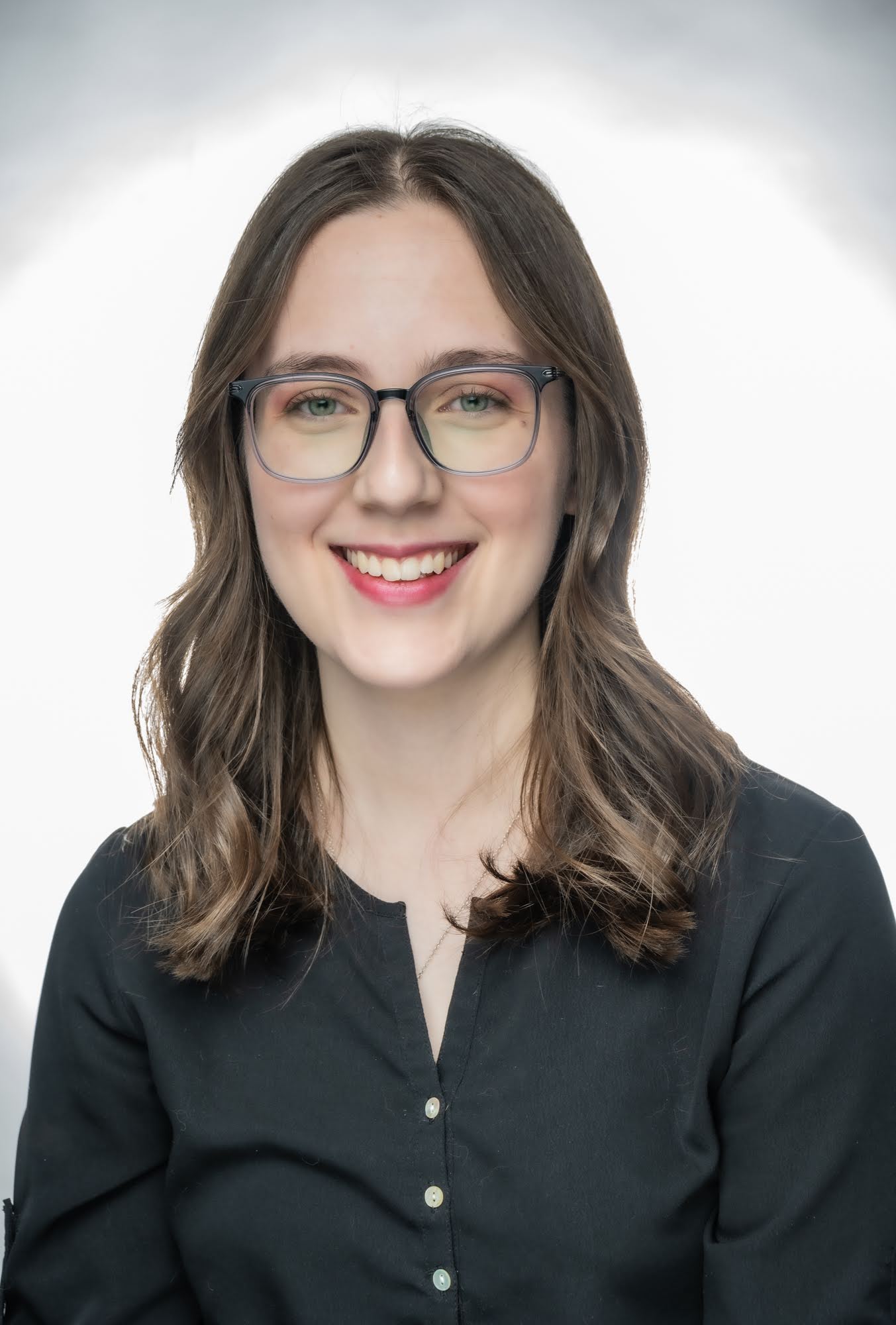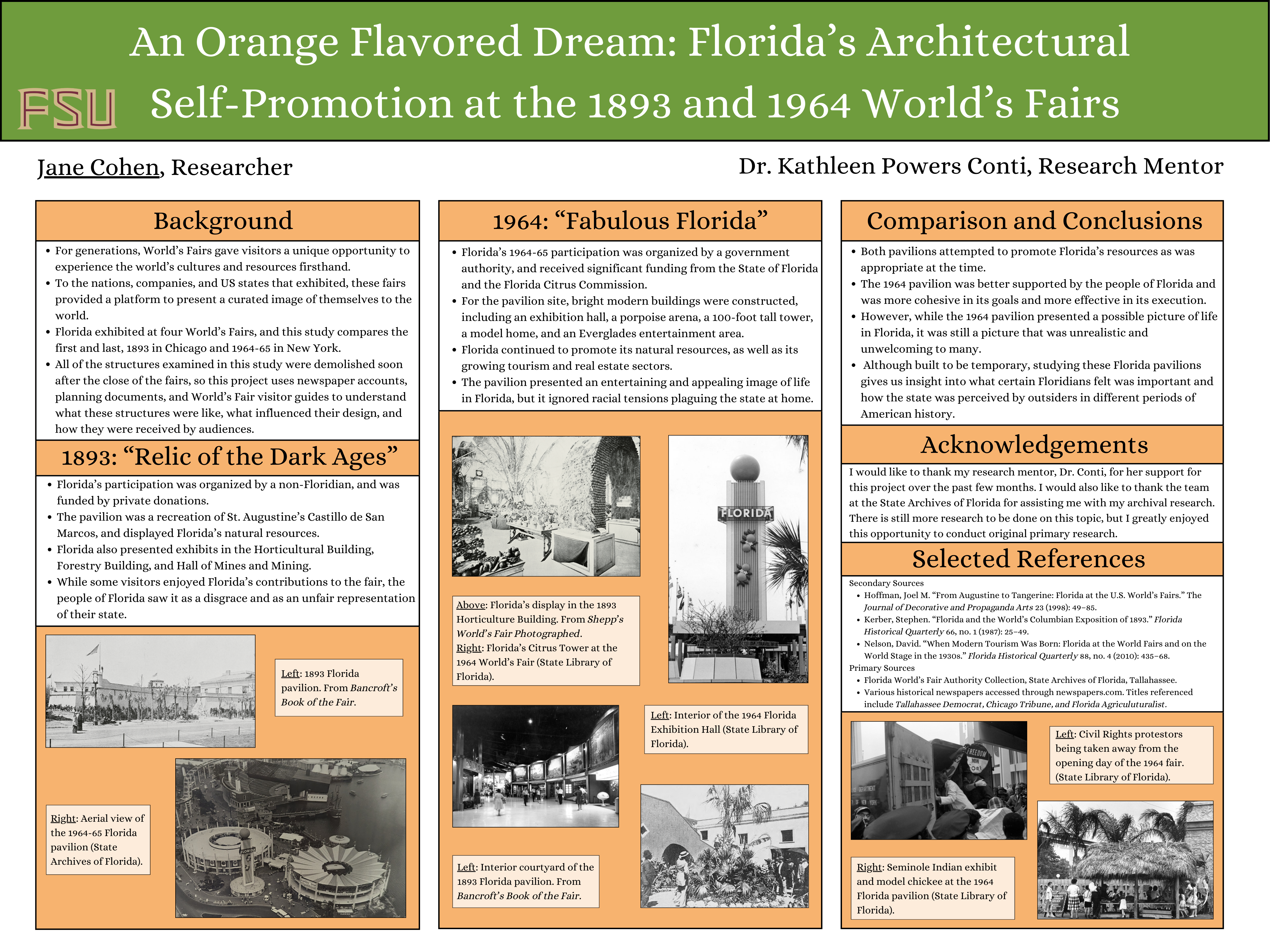Research Symposium
25th annual Undergraduate Research Symposium, April 1, 2025
Jane Cohen Poster Session 1: 9:30 am - 10:30 am/ Poster #122

BIO
Jane Cohen is a third year student at FSU, double majoring in music and history. A Tallahassee native, she is interested in learning about the past through historical newspapers and magazines, specifically focusing on nineteenth/early twentieth century popular culture. After graduation, she hopes to work in some sort of research, archival, or educational capacity.
An Orange Flavored Dream: Florida’s Architectural Self-Promotion at the 1893 and 1964 World’s Fairs
Authors: Jane Cohen, Kathleen Powers ContiStudent Major: Music and History
Mentor: Kathleen Powers Conti
Mentor's Department: History Mentor's College: Arts and Sciences Co-Presenters:
Abstract
For generations, World’s Fairs gave visitors a unique opportunity to experience the world’s cultures and resources firsthand. To the nations, companies, and US states that exhibited, these fairs provided a platform to present a curated image of themselves to the world. This project compares the first and last of Florida's four dedicated World's Fair pavilions, at the 1893 fair in Chicago and the 1964 fair in New York. The 1893 pavilion copied St. Augustine’s Castillo de San Marcos and featured displays on Florida agriculture and industry. Meanwhile, the 1964 pavilion was big, modern, and brightly colored, and under the slogan “Fabulous Florida,” emphasized the state’s potential for paradisiacal living.
All of the structures examined in this study were demolished soon after the close of the fairs, so this project uses newspaper accounts, planning documents, and World’s Fair visitor guides to understand what these structures were like, what influenced their design, and how they were received by audiences. The study finds that the both pavilions attempted to accomplish similar goals of promoting Florida’s economic potential, but the 1964 pavilion was better planned and offered a much more cohesive and authentic vision. However, while the 1964 pavilion was more effective, it still presented an image of Florida that was unrealistic and unwelcoming to many. Although built to be temporary, studying these Florida pavilions gives us insight into what Floridians felt was important and how the state was perceived by outsiders in different periods of American history.
Keywords: History, architecture, Florida, archives


